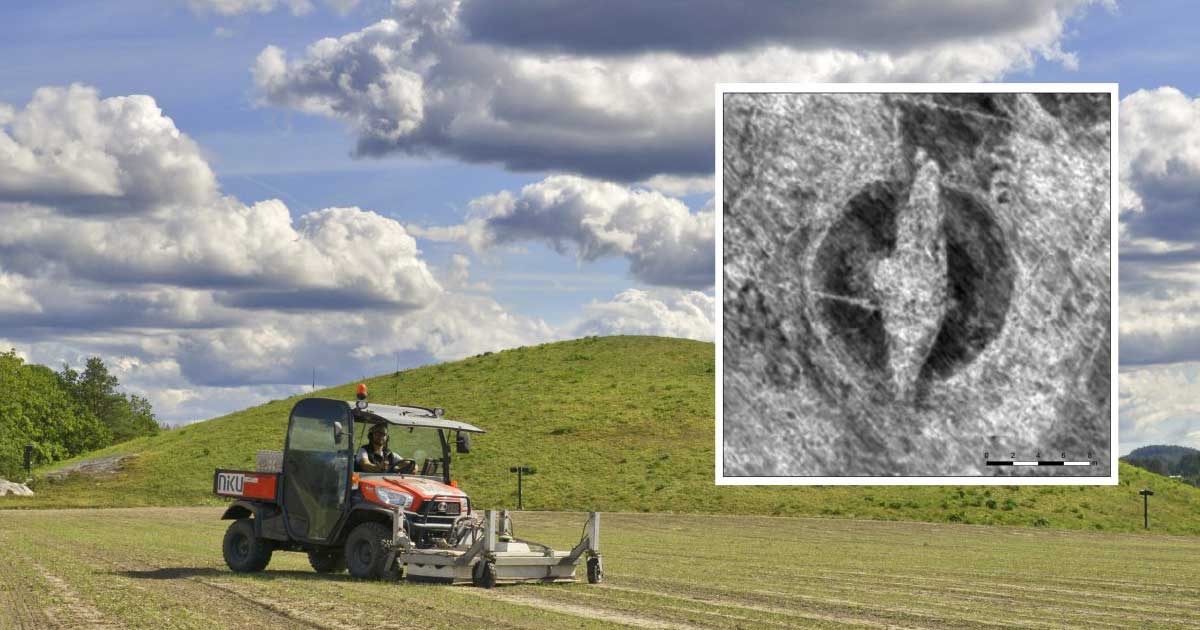Radar Reveals a Rare Viking Ship Burial in a Field of Archaeological Dreams
Norwegian archaeologists have announced a very rare and “incredibly exciting” find. They have used georadar equipment to identify structures and burials, including a buried Viking age ship. The find was made in what looks very much to be a cemetery. It had been widely held that such major discoveries were no longer possible, but thanks to technology experts identified the ship beneath the earth.
The Viking ship-burial
While it may sound strange to bury a ship, it was quite common for Vikings to do so. They would haul a ship on land and bury usually a king, queen or chieftain, in order to prepare the dead for the afterlife. There have been several such finds in the twentieth century. The ship-burial was found not far from the Norwegian capital Oslo in Viksletta, Østfold County. There are many burial mounds in the region and the lasts scanning was conducted on the agricultural land next to Jellestad (Jell Mound).

A georadar scan was used and revealed several burials along with the large ship burial (green ship shape circled with 2 red rings). (Image: NIKU)
The discovery of the ship-burial was a result of a survey by the Norwegian Institute for Cultural Heritage Research (NIKU). The team of experts working with the local authorities used motorized radars, to create scans of the ground beneath the surface. This technology, according to a NIKU press release, was ‘developed by the Ludwig Boltzmann Institute for Archaeological Prospection and Virtual Archaeology in Austria.’
It was during the survey that the team found some unusual features. This was to prove to be a ship. The vessel is quite large about 65 feet (20 meters) in length and is at a depth of 1.6 feet (0.5 meter). From the scans, the researchers have been able to determine that it’s lower portion at least is complete, but the condition of the vessel and its date cannot be determined. However, the team hopes to dig some test trenches next year and to obtain some wood samples and this will allow the vessel to be carbon dated.
- The Ghost Ships of San Francisco: Dozens of Wrecks Buried Beneath City Streets
- The Magnificent Treasures of Sutton Hoo, The Final Resting Place of Anglo-Saxon Royals
- Who Was the Exceptionally Powerfully Built Viking Buried in the Gokstad Ship?

Clear image of a ship revealed by georadar. (Image: NIKU)
New finds at the cemetery
The ship-burial is part of a much larger cemetery from the Viking-era. There are at least eight mounds, which had been partially destroyed, probably by farming. One of the mounds contains the ship. Lars Gustavsen, an archaeologist and project leader from NIKU said in a press release:
"The ship-burial does not exist in isolation, but forms part of a cemetery, which is clearly designed to display power and influence".
Near the cemetery experts also discovered five longhouses, where Vikings lived. These are long hall-like buildings that have been found all over the Viking world and there are six smaller buildings located near them. One of the longhouses was calculated to be ‘150 feet long’ reports the National Geographic. The site where the ship-burial was detected is near a monumental burial mound, known locally as Jell Mound, named after a legendary king. This is approximately 1500 years old and has been excavated by archaeologists in the past.
The significance of the ship-burial
Naturally, the find is raising hopes that the ship-burial may contain treasure and important artifacts. However, it is unlikely that any significant archaeological finds are left intact in the area because it has been intensively farmed all through the modern-era. Moreover, many Viking cemeteries were looted of their burial goods many centuries ago.
It is expected that further scans of the area will be conducted next year. This will use equipment such as a magnetometer to investigate the site further, in a non-invasive manner, helping to preserve the buried vessel. The find is of immense historical importance and one of the most significant in Norway in recent years. There are only three preserved Viking ships and they were all discovered many decades ago. It may be possible to excavate the mound and retrieve the ship’s remains in the future.
Top image: The Viking ship was found by georadar at Viksletta right next to the monumental Jell Mound in Østfold. Source: Lars Gustavsen, NIKU
By Ed Whelan



















